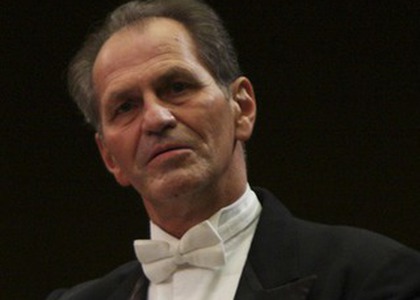> [Archived] Interviews

Interview with conductor Cristian Mandeal
On the 10th of February, Sala Radio will host a concert performed by National Radio Orchestra of Romania. This time, the schedule comprises a single symphony, namely Anton Bruckner's Symphony No. 7. Conductor Cristian Mandeal will give us more details about the symphony itself, as well as about his collaboration with the ensemble.
Mr. Mandeal, you are going to stand on the National Radio Orchestra conductor's podium once again, from which you will conduct Anton Bruckner's Symphony No. 7, a symphony of great scale. What determined you to make this choice?
It is time for Romania's large orchestras to take on this unique 19th century composer. Some call his work "the peak of universal symphonism". Of course, he might not be the "peak", but he can definitely be considered one of the world's greatest symphonists - he possesses an entirely unique language, a language of his own, a certain symphonic style that is unusual, but very personal. We cannot omit such a composer from our great orchestras' repertoire. So, after the pandemic (during which performances were…different), it is finally time to return to large scale compositions, specific to symphonic orchestras.
Which are the biggest challenges for a conductor when approaching such a large scale composition?
Its architectural comprehension, first of all. The architecture of a symphony composed by Bruckner is similar to that of a gothic cathedral, if you will, with pillars, openings, windows, ogival arches, and rib vaults, so the first element a conductor has to be able to tackle is the architecture. A conductor must, first of all, be able to understand and then mentally encompass the entire architecture. The second biggest challenge is to identify in the sections, fragments and syntax of the composition, all the morphological elements which form a unitary musical movement, so that there are no moments of boredom or of unfounded repetitiveness. It's important to identify the evolution, the meaning of each microstructure which comprises a morphological element of the composition. This way, the composition gains unity, identity, architecture and interest for the moment, for each second of music.
Which are the biggest challenges for an orchestra when interpreting such a composition?
First of all, the specific sound. Bruckner proposes a different sound, in comparison to Ravel or Mozart for example, and it needs to be implemented from the very beginning. Each piano nuance is a nuance of substance, of connection with the instrument, with its strings. Each sound has intensity and it leads to the following one. This aspect imposes a certain instrumental attitude, which is slightly unusual, let's say, or not very usual. It's somewhat related to the attitude encountered in Brahms' compositions, but much more intense in Bruckner's case.
What are your thoughts on reuniting with an ensemble you've collaborated with for such a long time?
We've experienced many moments of satisfaction and of joy together. We've lived together and of course I already know them very well, I know what they are capable of, and I know the result of our work will be a very good one. So I can only be happy about it.
After the concert, an autograph session will also be held for "Serenity", the new album released by Casa Radio. What does this disc mean for you?
This album was produced together with the Orchestra of the Romanian Radio Broadcasting, and it includes an entirely different type of repertoire, one specific to chamber orchestras, but it's not any less interesting, or rich in ideas. It's an album developed from the very beginning based on a certain unifying vector, which can be called, in this case, Serenade, meaning that it includes music rich in ideas and emotions, but with a certain balance, lacking in acute conflictuality. This is the music to calm the soul, the nerves and, why not, to calm excessive feelings. It's an album which can make anyone feel better, regardless of when they listen to it.
Translated by Ioana Diana Sandu,
University of Bucharest, Faculty of Foreign Languages and Literatures, MTTLC, year II
Corrected by Silvia Petrescu














